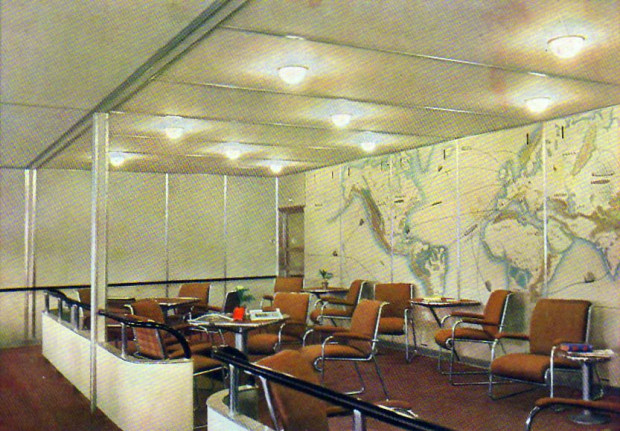
We’ve all seen the Hindenburg. Specifically, we’ve all seen it exploding, an incident captured on film on that fateful day of May 6, 1937 — fateful for those aboard, of course, but also fateful for the passenger airship industry, which never recovered from this worst of all possible press. The contemporary rise of Pan American Airlines didn’t help, either, so now, when we want to go to a faraway land, we’ve usually got to take a jet. I happen to be moving to Korea tomorrow, and to get there I simply don’t have the choice of an airship (Hindenburg- class or otherwise) nor have I ever had that choice. I’ve thus never seen the inside of an airship — until today.
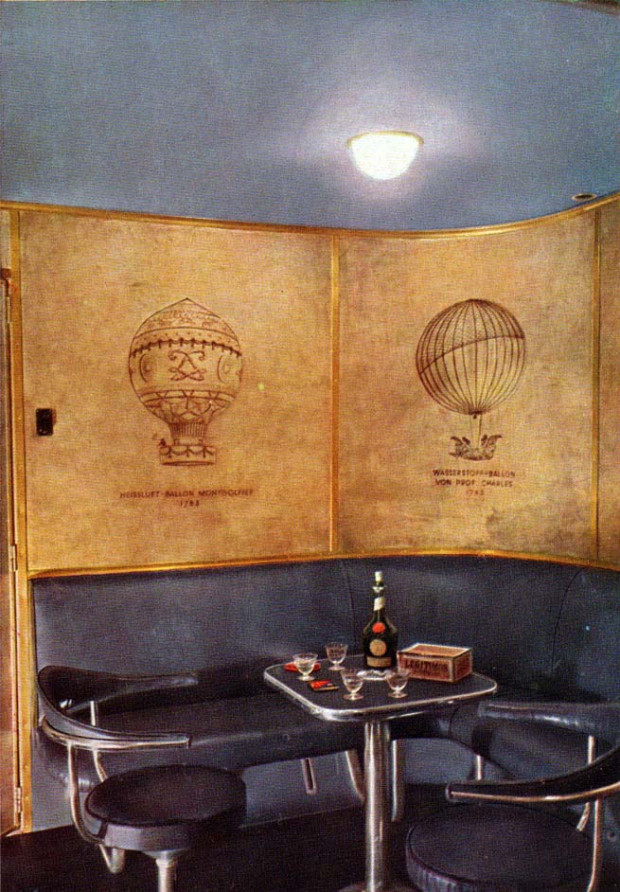
These color images reveal the interior of not just any old 1930s airship but the Hindenburg itself, looking as genteel and well-appointed as you might expect, with accommodations up to and including, somewhere below its hydrogen-filled balloon, a smoking room. It brings to mind Sideshow Bob’s offhand comment on one Simpsons episode lamenting the passage of “the days when aviation was a gentleman’s pursuit, back before every Joe Sweatsock could wedge himself behind a lunch tray and jet off to Raleigh-Durham.” But then, it also brings to mind another episode in which Bart gets a checkbook printed with flipbook-style images of the famous Hindenburg disaster newsreel footage.
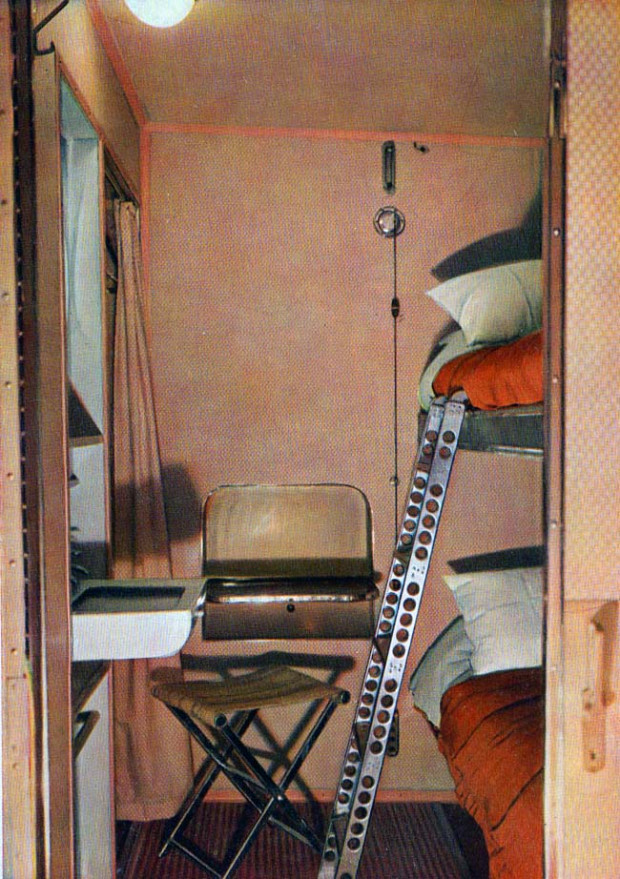
That clip, often dubbed with Herbert Morrison’s “Oh, the humanity!” reportorial narration, has familiarized us with the last large passenger airship’s exterior, but these images of its interior have had less exposure. For more, have a look at Airships.net: a Dirigible and Zeppelin History Site, which offers a wealth of detail on the Hindenburg’s passenger decks, control car, flight instrument, flight controls, crew areas, and keel.
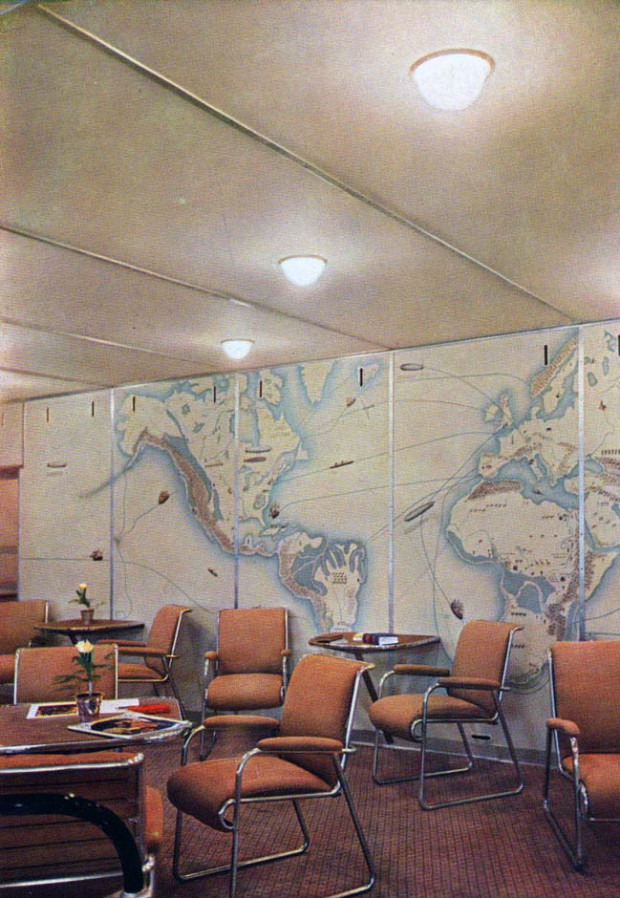
The more you learn about airships, the more intriguing a form of travel they seem — until you learn about all the other disasters that preceded the Hindenburg, anyway. And that aside, given its top speed of 84 miles per hour, it would take a similarly retro airship at least seven times longer to get me to Korea than a jet, so I guess I’ll have to stick with the airlines for now.
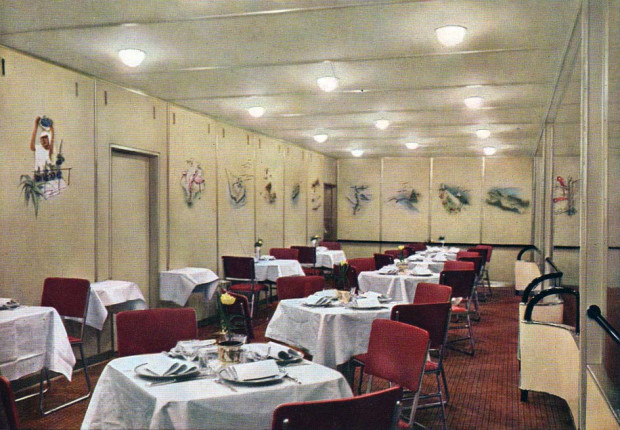
Related Content:
An Animated History Of Aviation: From da Vinci’s Sketches to Apollo 11
The Miracle of Flight, the Classic Early Animation by Terry Gilliam
Colin Marshall writes elsewhere on cities, language, Asia, and men’s style. He’s at work on a book about Los Angeles, A Los Angeles Primer, the video series The City in Cinema, and the crowdfunded journalism project Where Is the City of the Future? Follow him on Twitter at @colinmarshall or on Facebook.


You’ll love South Korea. Enjoy the kimchee. Avoid the Soju.
don’t listen to AB.
Soju goes with everything, especially beer.
The Hindenburg furniture was produced by http://www.lc-stendal.de/index.php/profile.html
On an amazing visit to the factory, I saw framed pictures if the installation but was even more impressed by the hanging time clock, also viewed by the likes of all the Dessau Bauhaus designers/creators. As a wonderful surprise and a gift of sincere appreciation, they included it with our first container order. It is among our most treasured items.
*of the installation…*
Soju is wonderful! But Makuhli is even better!
Whereabouts in South Korea are you moving? I still have some friends in Pohang (a smaller city on the south east coast). Make sure to find Haejangguk (hangover soup)! It’s awesome!
Genteel — and very gentile.….